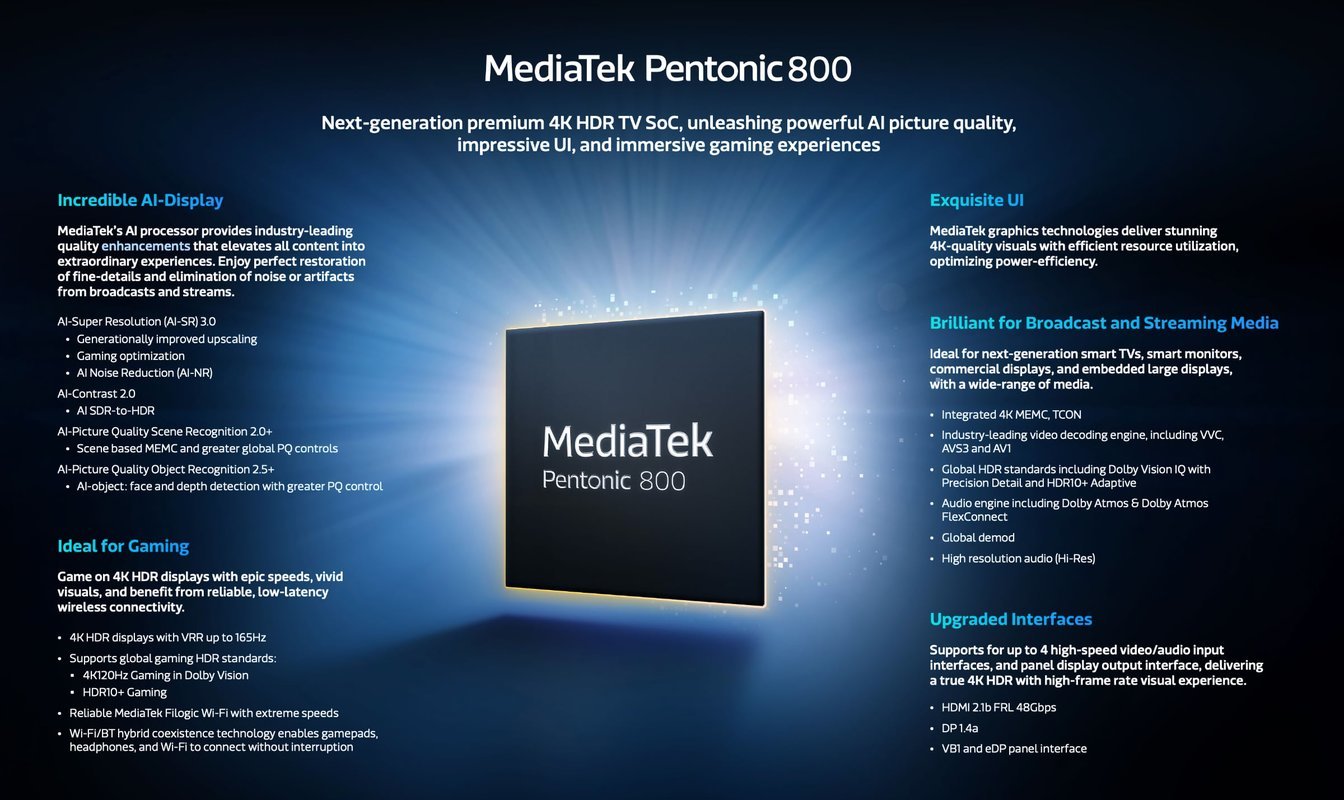The world’s top TV microchip maker MediaTek, which makes the silicon that powers the vast majority of smart televisions in the world today, has announced a new processor that delivers faster AI processing, support for 165Hz refresh rates, Wi-Fi 7 and more.

MediaTek’s chips are widely used by brands including Sony, Philips and TCL, and they appear in just about every Google TV for example. The Pentonic 1000 chip that debuted in 2023 powers Sony’s high-end A95L QD-OLED TV, as well as Philip’s premium OLED models in 2024, while the Pentonic 700 chipset appears in many of TCL’s 2023 and 2024 Google TVs.
The company has now announced a new chipset to sit alongside the Pentonic 1000 and 700 processors. It’s called the Pentonic 800, and it’s set to appear in new TVs launched either later this year, or more likely in 2025.
The MediaTek Pentonic 800 is said to deliver “best-in-class video, audio and cloud gaming experiences”, and is pitched as being ideal for all kinds of 4K resolution displays, including TVs, monitors, commercial displays and more. Compared to its “previous generation chipset”, it “offers 50% faster AI processing,” the company said.
What isn’t clear is the “previous generation chip” that Pentonic refers to, though in any case the enhanced AI performance will surely result in much better picture performance for any TV that’s fitted with the new Pentonic 800. The company said it supports new processes such as AI-Super Resolution 3.0. AI-Picture Quality Scene Recognition 2.0+, AI-Contrast 2.0, and AI-Picture Quality Object Recognition 2.5+. These capabilities will allow the chipset to better recognize and understand what’s shown on-screen, and deliver sharper, more realistic images.
The other big benefit of the Pentonic 800 chips appears to be 4K resolution gaming at 165Hz, which is the next level up after 144Hz, which is now found on many of the latest, premium TVs sold this year. Consumers should note, however, that these higher frame rates are only applicable to PC gaming, as neither the X-Box or PS5 console currently supports anything more than 120Hz.
Gamers will also be pleased to see that the chip allows for TVs to be shipped with up to four HDMI 2.1 ports, which is double the number found on many of today’s high-end TVs, which only feature two. LG Electronics’ TVs are the exception to this rule, and have shipped with four HDMI 2.1 ports since last year.
According to MediaTek, the chip will actually support the latest HDMI 2.1a standard, which adds Quick Media Switching capabilities, though the company itself did not acknowledge this feature.
Elsewhere, MediaTek said the Pentonic 800 provides support for video codecs including AV1, HEVC, AVS3 High profile and VVC, which is a new standard also known as H.266. While the Pentonic 1000 and 700 chips also support the decoding of VVC content, there isn’t a single TV with that chip that takes advantage of this feature, due to the requirement of an additional hardware decoder chip. Hopefully with the Pentonic 800 it will be easier to implement, and we’ll start seeing TVs actually support this feature.
As for the WiFi 7 standard, this is also supported, but once again MediaTek says a companion chip will be required to actually enable it. So the faster wireless data transfer speeds of WiFi 7 may not actually appear in many TVs.